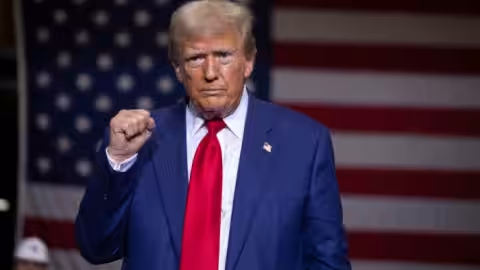The minister charged with tackling violence against girls has called on smartphone makers to do more to embed child protection technology into their devices, as she defended the UK’s new requirements for online age verification.
Jess Phillips said it is “absolutely imperative” that device manufacturers and the developers of their operating systems take greater responsibility for blocking pornographic imagery from children’s phones.
“I want to see tech companies . . . putting as much resource and capability into this as they do into addictive algorithms,” Philips, the minister for safeguarding, told the Financial Times in an interview.
However, as the government monitors the impact of the Online Safety Act and other recent steps to prevent children from accessing pornographic and harmful material, she did not say whether it was planning more rules to compel companies to introduce additional controls.
Regulator Ofcom last month began enforcing elements of the law, which was passed in 2023, that introduced new age assurance requirements for sites hosting such content, triggering renewed debate about how to protect children online.
Phillips said it was “early days” for these newest elements of the law, but insisted it was already having a beneficial effect. “Do I think age verification has stopped a 10-year-old being able to look at pornography? Yes I do,” she said.
A study by the UK’s Children’s Commissioner, conducted before the new rules came into force, found that the average child first encounters pornography online at the age of 13, more than half of them finding it by accident on social media sites.
Phillips insisted it was particularly vital that companies making phones and other devices containing cameras “are part of the solution”, given the potential for devices to be used in the production of child sexual abuse imagery.
The Internet Watch Foundation, a charity, has said the vast majority of such material reported to it is “self-generated”, with children tricked or extorted into using the phone’s camera to produce sexual images of themselves and share them.
As an example, she pointed to a new device aimed at children produced by HMD Global, owner of the Nokia brand, that contains innovative software designed to detect and block pornography.
Launched on Wednesday, the HMD Fuse is the first handset to use HarmBlock software from UK-based company SafeToNet which analyses any images displayed on its screen to detect pornography, as well as containing other controls in the device’s camera and Android operating system.
“I don’t know that I would have necessarily thought that what was being suggested was possible before I saw it with my own eyes,” Phillips said of the handset being released in the UK this month.
Apple’s iPhones and devices running Google’s Android software already offer parents the ability to control which apps their children can install and set limits on their use. Apple plans to offer new capabilities in a software update this year, including allowing parents to share a child’s age range with third-party apps, without sharing their exact birth date.
Since 2022, Apple has offered parents a tool called Communication Safety that detects nudity in photos and video before they are sent or viewed through its Messages app on a child’s device. The system will soon be expanded to include FaceTime video calls.
Google said this year that its “Family System” for Android devices would be expanded with new controls, including restricting calls and texts only to approved contacts.
Phillips said many parents remained “anxious about not knowing what their kids are looking at” on their phones.
“A change in this space is coming one way or another — because of people power [and] parents’ power,” she said. “Whether it’s regulation or just people voting with their feet and the market making the case, the handset companies and those who make the operating systems that sit within those devices would be foolish not to do more now.”
A huge jump in UK usage of virtual private networks since age verification rules were brought in by many pornographic websites and social networking apps suggests many people have turned to VPN technology to disguise their locations and evade the controls.
Phillips said: “If there are very easy means of getting around [the rules], then obviously government has to look at that.”























